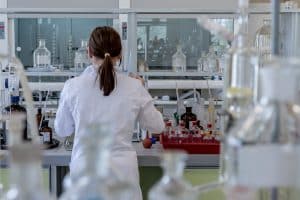Sperm Viability
Sperm viability is effectively the measurement of your living sperm. Although normal seminal fluid contains huge numbers of sperm, not all of these sperm will be viable. ‘Viable’ in its most basic sense means ‘alive’, although as we will see, there are other factors that can affect the viability of sperm beyond simply whether they are alive or dead.

Testing viability
Because sperm viability is an important measure of fertility, doctors and scientists often test seminal fluid to measure the percentage of living and non-living sperm it contains. For normal fertility, about 60% or more of a man’s sperm need to be viable. The test is often carried out using a dye that will be absorbed by non-viable cells, but not by living sperm. Dead cells tend to have an incomplete cellular membrane which lets dye through, but living sperm have a complete membrane that keeps it out.
‘Viable’ can also have a wider meaning than just living or dead. Viable sperm are those which are healthy and without defects of the sort that might prevent conception. These defects might include damage to the DNA and its substrate, or the presence of anti-sperm antibodies, or other chemical issues which would prevent the sperm fertilising an egg.
How important is sperm viability?
Sperm viability is important because many sperm will die in the acid environment of the vagina. If there are too few viable sperm to start with, it is unlikely that any will survive to reach the egg. So anything that reduces the number of a man’s viable sperm, reduces his chances of fatherhood.
To get an accurate picture of fertility, the percentage of viable sperm is normally looked at alongside the percentage of motile sperm and the total sperm count. Because it is the total number of viable and motile sperm that is important, a very high sperm count can sometimes help mitigate low viability. In most cases though, a low percentage of viable sperm spells problems for a man trying to become a father.


